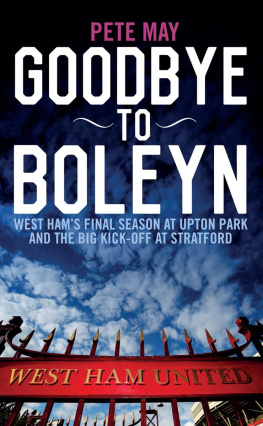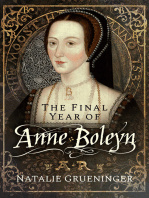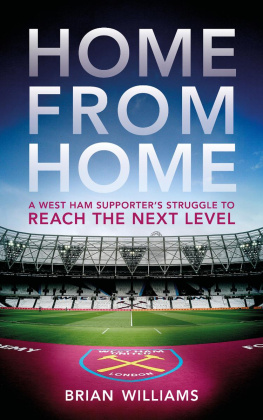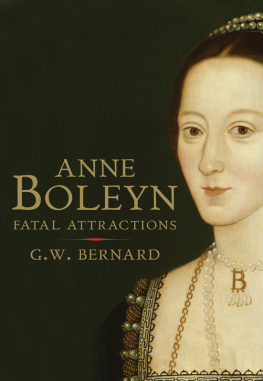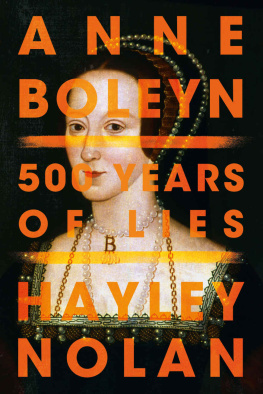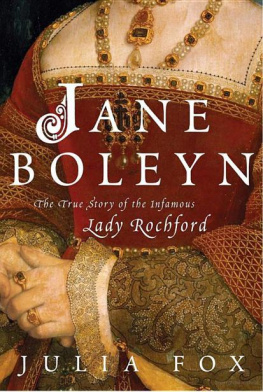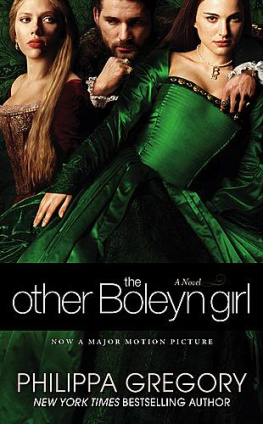Thanks to the inimitable Carol and Ken Lucas and all at Kens Caf, Vivian Archer, John Newman and all at the Newham Bookshop, to the Black Lion for stocking real ale, to all the local traders at Upton Park and, of course, to Mr Moon. Im also indebted to Steve Chamberlain for publishing my pieces on my West Ham family and my dads last game in The Guardian (extended versions of which can be found in Chapters 1 and 8), to Iain Dale and all at Biteback for commissioning this book and to Victoria Godden for copy-editing. And finally, thanks to my wife Nicola and daughters Lola and Nell for putting up with my claret-and-blue obsessions.
THIS ISNT A BOOK ABOUT THE ECONOMICS OF STADIUM moves. Instead, what it hopefully captures is a sense of what it was like to be a fan at the Boleyn Ground for that final season and also at the first games at the sparkling new Olympic Stadium. Some chapters look back at my memories of attending games since the 1970s, while in the diary sections on 201516 Ive tried to acknowledge the seasonal rhythms of the football fan, the minutiae of football trivia, the banter, the lucky shirts, the cafs and pubs, the chants, and the unforgettable atmosphere of the final home game against Manchester United.
For West Ham fans, the Boleyn Ground was the only home they had ever known. When West Ham first bid in 2012 to move from the Boleyn to the Olympic Stadium in Stratford, it all seemed aeons away. The fans continued to visit Kens Caf, the Boleyn pub, the Central, the Ercan chip shop and myriad other pre- and post-match institutions.
Suddenly, however, it was the final season at the Boleyn, and the thirteen months from July 2015 to August 2016 saw massive changes as the Hammers swapped the tight, working-class streets of E13 for the shopping centre of Westfield and the concrete expanses of the Queen Elizabeth Olympic Park.
The club moved from the Memorial Grounds to the Boleyn Ground in 1904, the stadium taking its name from Green Street House, known as the Boleyn Castle because of its associations with Anne Boleyn, an early WAG of Henry VIII (a relationship that, like many a West Ham game, didnt end happily).
The ground became a central part of its community. Moore, Hurst and Peters had won the World Cup for England while at the Boleyn. Parades past the Boleyn pub marked the FA Cup wins of 1964, 1975 and 1980 and the European Cup Winners Cup win of 1965.
Most West Ham fans could see the commercial logic of moving to a bigger home, but for the traditionalists there was also the fear that in the cash-dominated era of the Premier League another link to the roots of football was being lost. Pubs, cafs and stalls would go out of business and wed no longer be close enough to the pitch for the players to hear our expletives. Would the new stadium ever be able to replicate the intimidating but intimate atmosphere of Upton Park? Football fans are by nature conservative, attached to routines. Relegation we can cope with; change is a little harder.
It would have been difficult for any owners to have turned down the Olympic Stadium, despite the fact that it was designed for athletics and not football. By the time the new roof had been built and retractable seating installed it had cost an estimated 701 million. West Ham would end up getting it for around 15 million, plus a 40 million loan from Newham Council and as a bonus greatly annoy Spurs, who had made a controversial late bid to move to Stratford.
Owners David Gold and David Sullivan had bought a club with massive debts in 2010 but now saw not just a bargain but an opportunity to rise to the fabled next level. West Ham could nearly double its capacity, from 35,000 to 60,000. With all that extra income, world-class players would be attracted. The new stadium was also much more accessible, having many more train and tube links than Upton Park, which is isolated on the District Line, and was still in the borough of Newham, just a couple of miles from the Boleyn.
Karren Brady, West Hams vice-chairman, negotiated hard, knowing the London Legacy Development Corporation were desperate not to be left with a rusting white elephant of a stadium. The club would have a 100-year lease and the rent would be a reasonable 2.5 million a year (and its halved if West Ham are relegated, which as an Irons fan you always have to consider a possibility). And we get free goalposts and corner flags.
Yet, for all the apparent benefits, leaving home still hurts. West Ham played at the Boleyn Ground for 112 years. Soon it will be a housing estate. Nevertheless, the club endures, and at a new stadium perhaps our dreams will nearly reach the sky. We might have said goodbye to Boleyn, but we wont forget.
P ETE M AY
London, September 2016
THIS SEASON MY FAMILY WILL BE LOSING AN OLD FRIEND: West Hams Boleyn Ground, commonly known as Upton Park. The club is moving to the Olympic Stadium at Stratford. At the end of the 2015/16 season, the old ground will be turned into flats and part of my family history will be erased. Once, families had village churches to bind them together, now they have football stadiums. Three generations of my family have been Irons supporters, mainly through my possibly misguided influence.
When I started going to matches at the age of eleven in 1970, my dad Dennis (who had previously shown no interest in the game) and I stood on the cavernous terrace of the North Bank. Before kick-off, we bought paper bags of Percy Daltons roasted peanuts, still in their shells, from a man wearing a white coat. Our position was just behind the right goalpost, from where you could see the sweat on Bobby Moores forehead and smell the Ralgex on the players legs. For a suburban Essex boy, it was astonishing to watch the police chucking out swearing skinheads in high-leg DMs. Even the adults were calling Leicesters Frank Worthington a wanker. It was dangerous urban territory.
My dad became a convert and attended matches on his own after I started to go to games with my teenaged friends. But wed often meet on the District Line home and after evening games share a pint in Upminster. You could sometimes see my dads white summer jacket behind the goalpost on The Big Match after Sunday lunch. We both saw West Ham win the FA Cup at Wembley in 1975 and 1980. As my dad got older, he moved to a seat in the East Stand. Football became welcome neutral territory during my teenage years as we clashed over politics and his desire for me to go into farming. If nothing else, we could always discuss the length of Bobby Fergusons goal kicks.
My mum Sheila only ever went to one game with us and was appalled by the swearing, but dutifully took an interest in the results. In 1986, when my parents moved to Norfolk, I took over my dads season ticket in the East Stand and it felt like an initiation into adulthood.
When I became a parent myself, it was time to introduce my children into the Upton Park cult. The key, I thought, was not to force them to support West Ham, but to take them to easier, kids-for-a-quid home matches and hope they became fans by osmosis. I convinced my wife Nicola who strangely prefers watching dressage to football that it was a form of childcare.

